Smut diseases – identify and control
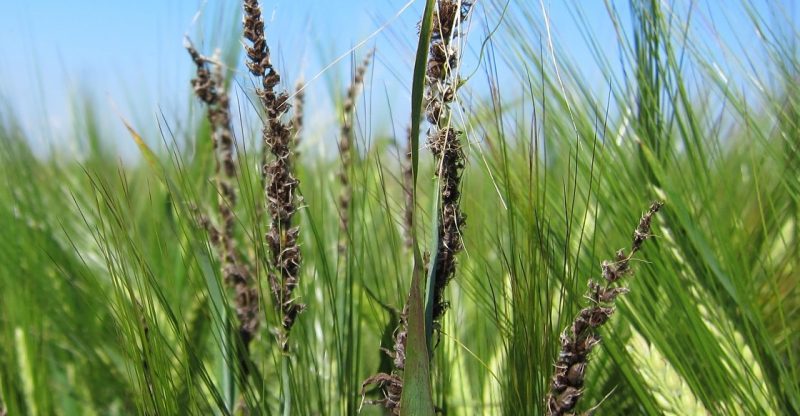
Smut is a disease of cereal plants caused by a parasitic fungus. It is manifested by the total or partial destruction of the attacked parts and by the appearance of a black powder.
Loose wheat smut (USTILAGO TRITICI)
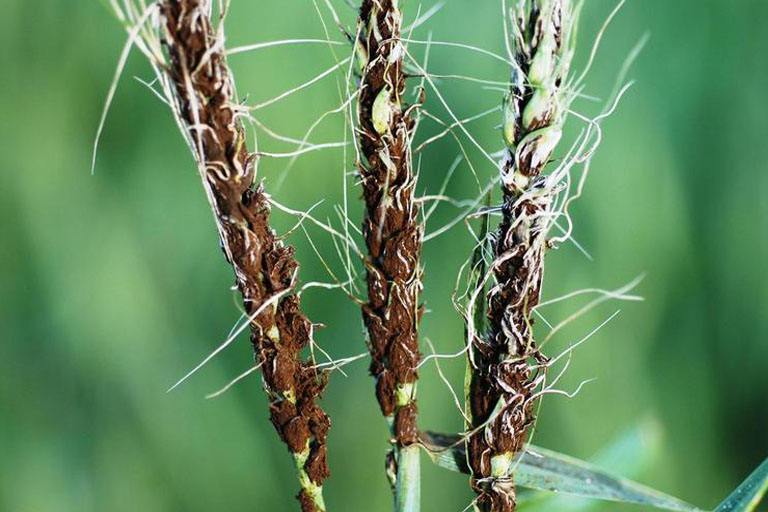
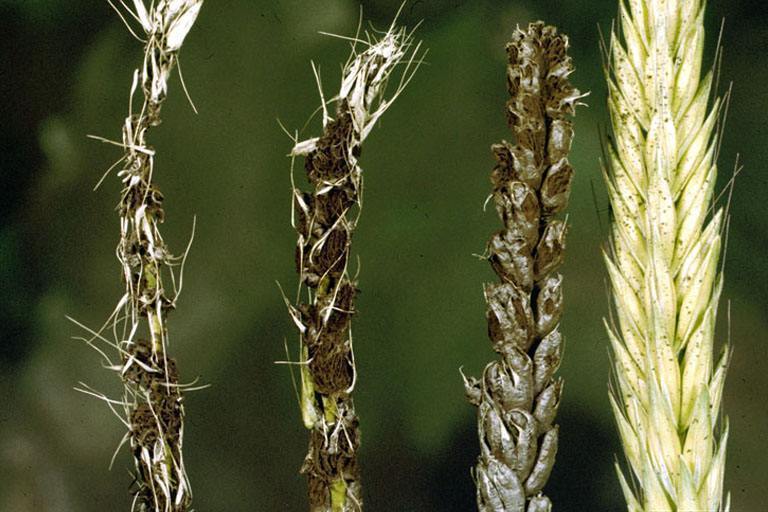
The disease is reported in all wheat-growing areas.
Symptom. The disease becomes evident during the sprouting period, with diseased plants sprouting faster than healthy ones. The caryopses and aristae are destroyed and replaced by a dusty, blackish mass of teliospores of the fungus.
At the onset of the attack, the spore mass is covered by a silver membrane. It soon dries out and tears, so that after 2-8 days the spores of the fungus spread. The rootlet remains hollow, often retaining small remnants of teliospores.
The fungus can survive for 3-5 years or more in infected caryopses.
Prophylaxis. Cultivation of resistant varieties, treatment of grains for sowing with specific fungicides is recommended.
Recommended products
-
You can find products on a different store
Change Store -
You can find products on a different store
Change Store -
You can find products on a different store
Change Store -
You can find products on a different store
Change Store -
You can find products on a different store
Change Store -
You can find products on a different store
Change Store -
You can find products on a different store
Change Store -
You can find products on a different store
Change Store -
You can find products on a different store
Change Store -
You can find products on a different store
Change Store -
You can find products on a different store
Change Store -
You can find products on a different store
Change Store -
You can find products on a different store
Change Store -
You can find products on a different store
Change Store -
You can find products on a different store
Change Store -
You can find products on a different store
Change Store -
You can find products on a different store
Change Store -
You can find products on a different store
Change Store -
You can find products on a different store
Change Store -
You can find products on a different store
Change Store -
You can find products on a different store
Change Store -
You can find products on a different store
Change Store -
You can find products on a different store
Change Store -
You can find products on a different store
Change Store
Loose smut of barley (USTILAGO NUDA)
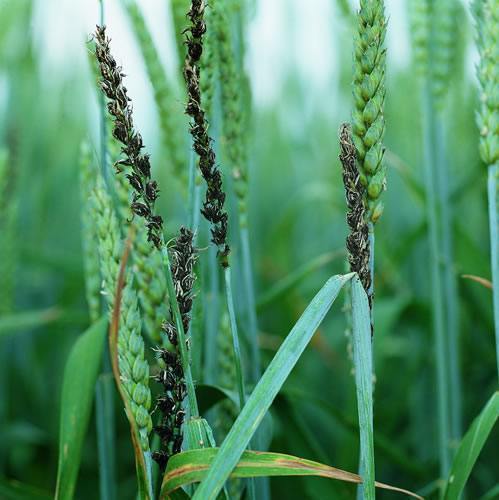
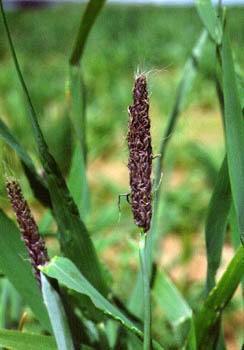
This disease is widespread in all barley-growing areas.
Symptom. Before spike formation, diseased plants are shorter and have the last leaf covering the spikelet of a lighter, yellowish-green colour.
These plants are earlier sprouting than healthy ones, the ears are thick and black. The grains, chaff and aristae are destroyed and replaced by a blackish, powdery mass of teliospores. The teliospores soon spread, leaving the rachis empty.
During threshing, teliospores are carried by air currents and reach the barley flowers. The fungus is a threshing fungus and the life cycle takes 2 years.
Prophylaxis. Cultivation of resistant varieties, treatment of barley grains for sowing with specific fungicides is recommended.
Recommended products
-
You can find products on a different store
Change Store -
You can find products on a different store
Change Store -
You can find products on a different store
Change Store -
You can find products on a different store
Change Store -
You can find products on a different store
Change Store -
You can find products on a different store
Change Store -
You can find products on a different store
Change Store -
You can find products on a different store
Change Store -
You can find products on a different store
Change Store -
You can find products on a different store
Change Store -
You can find products on a different store
Change Store -
You can find products on a different store
Change Store -
You can find products on a different store
Change Store -
You can find products on a different store
Change Store -
You can find products on a different store
Change Store -
You can find products on a different store
Change Store -
You can find products on a different store
Change Store -
You can find products on a different store
Change Store -
You can find products on a different store
Change Store -
You can find products on a different store
Change Store -
You can find products on a different store
Change Store -
You can find products on a different store
Change Store -
You can find products on a different store
Change Store -
You can find products on a different store
Change Store
Covered smut of barley (USTILAGO HORDEI)
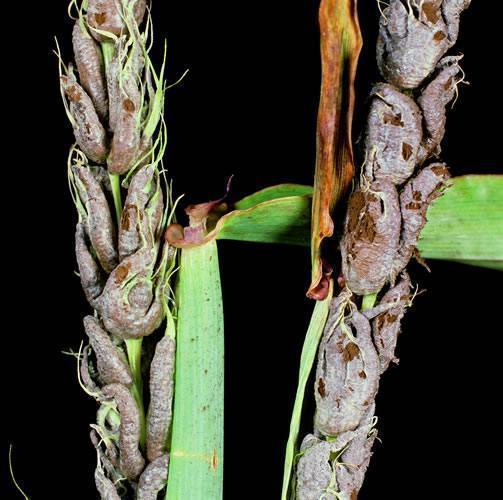
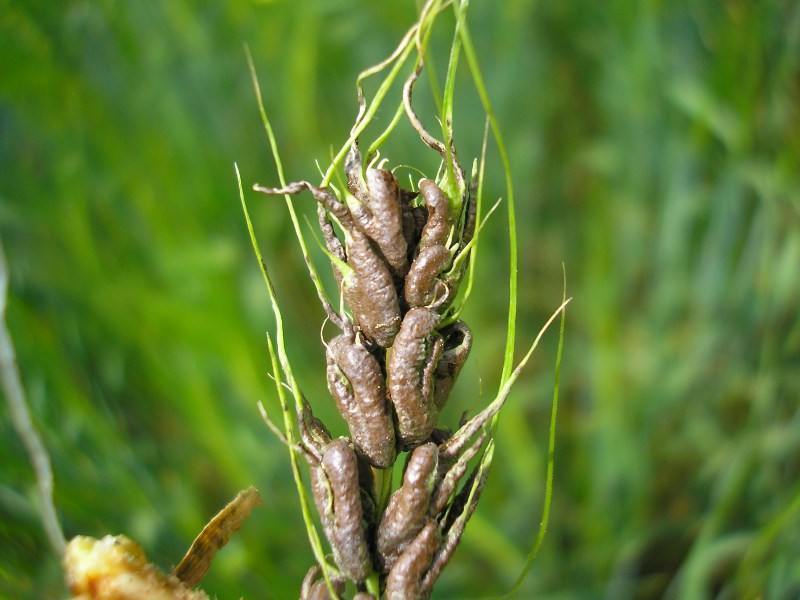
The disease occurs in autumn and spring barley in all growing regions.
Symptom. Diseased plants are shorter than healthy ones and sprout earlier. In place of the caryopses, a yellowish mass forms at first, then blackish-brown. It is hard, compact, later dusty, formed from the teliospores of the fungus, wrapped in a thin, whitish, shiny membrane.
Unlike the loose smut, the chaff and aristae of the attacked ears are not completely destroyed. The affected spike is hard, does not tear easily, and teliospores are not released until threshing.
Sometimes the rachis is also attacked, whose tissue is replaced from place to place by masses of teliospores, because of this, the spike is easily broken during harvesting and threshing.
Barley plants are infected in the hypocotyl zone, and the fungal life cycle takes one year.
Prophylaxis. It is recommended to grow resistant varieties and to treat barley grains for sowing with specific fungicides.
Recommended products
-
You can find products on a different store
Change Store -
You can find products on a different store
Change Store -
You can find products on a different store
Change Store -
You can find products on a different store
Change Store -
You can find products on a different store
Change Store -
You can find products on a different store
Change Store -
You can find products on a different store
Change Store -
You can find products on a different store
Change Store -
You can find products on a different store
Change Store -
You can find products on a different store
Change Store -
You can find products on a different store
Change Store -
You can find products on a different store
Change Store -
You can find products on a different store
Change Store -
You can find products on a different store
Change Store -
You can find products on a different store
Change Store -
You can find products on a different store
Change Store -
You can find products on a different store
Change Store -
You can find products on a different store
Change Store -
You can find products on a different store
Change Store -
You can find products on a different store
Change Store -
You can find products on a different store
Change Store -
You can find products on a different store
Change Store -
You can find products on a different store
Change Store -
You can find products on a different store
Change Store
Loose smut of oats (USTILAGO AVENAE)
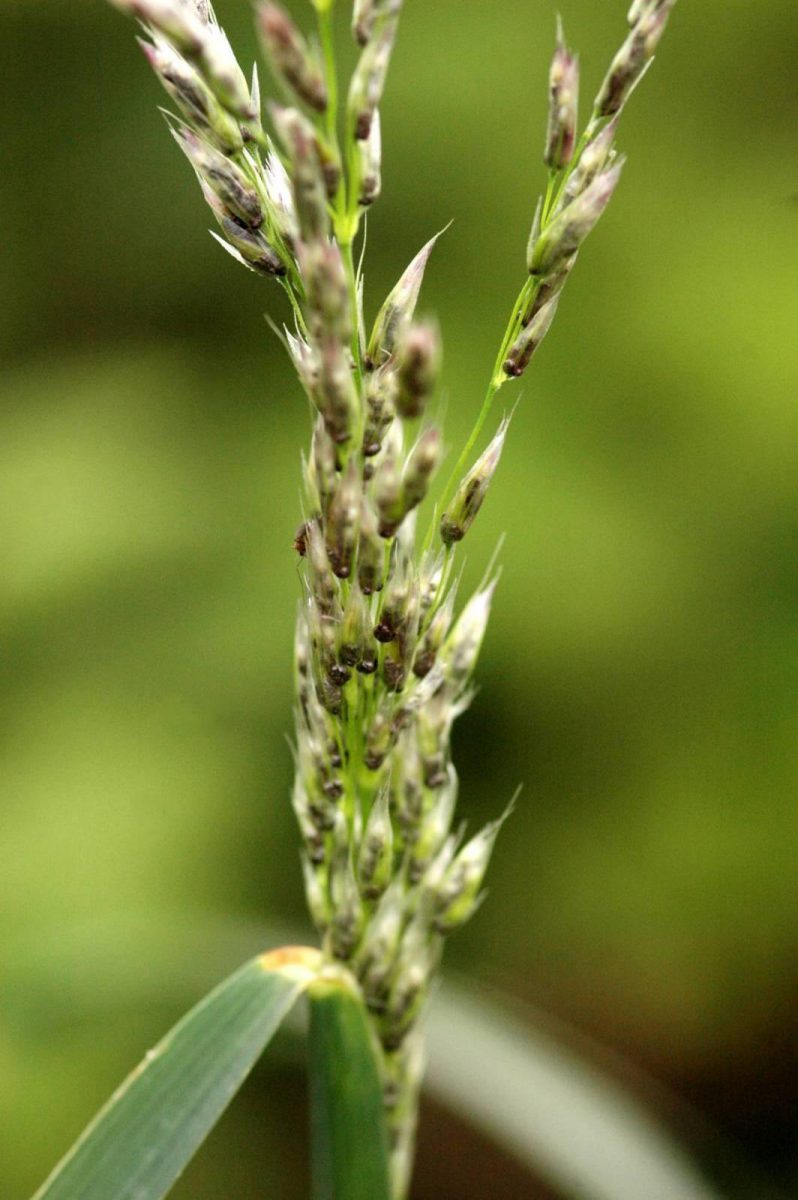
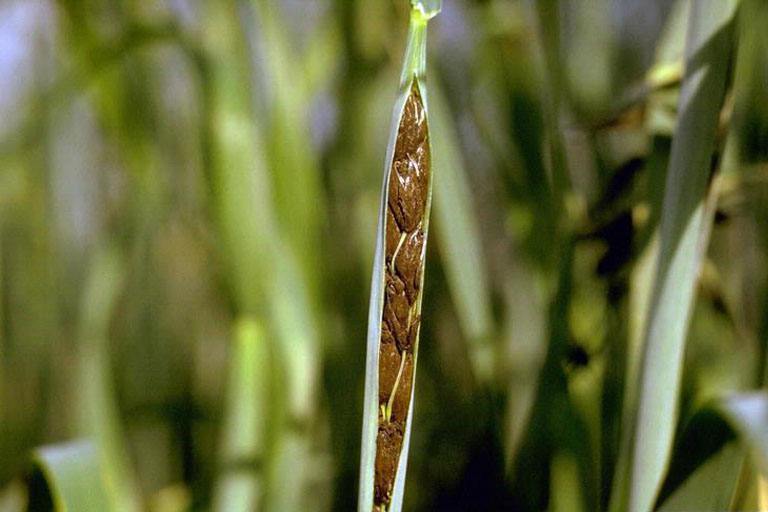
It is one of the most widespread diseases of oats and can cause quite serious damage.
Symptom. Before threshing, diseased plants are shorter than healthy ones and have a light yellow-green colour than healthy ones.
In the panicle, the caryopses and glumes are replaced by a blackish-brown powder representing the teliospore mass. These are easily blown away by the wind. Only the erect branches of the panicle remain, bearing teliospores and the destroyed remains of the chaff.
The loose smut of oats occurs in two forms depending on environmental conditions: soft smut (in hot, dry weather) and hard smut (in cool, wet weather).
The life cycle of the fungus and the evolution of the disease is 2 years.
Prophylaxis. It is recommended to grow resistant varieties and to treat oats grains for sowing with specific fungicides.
Corn smut (USTILAGO MAYDIS)
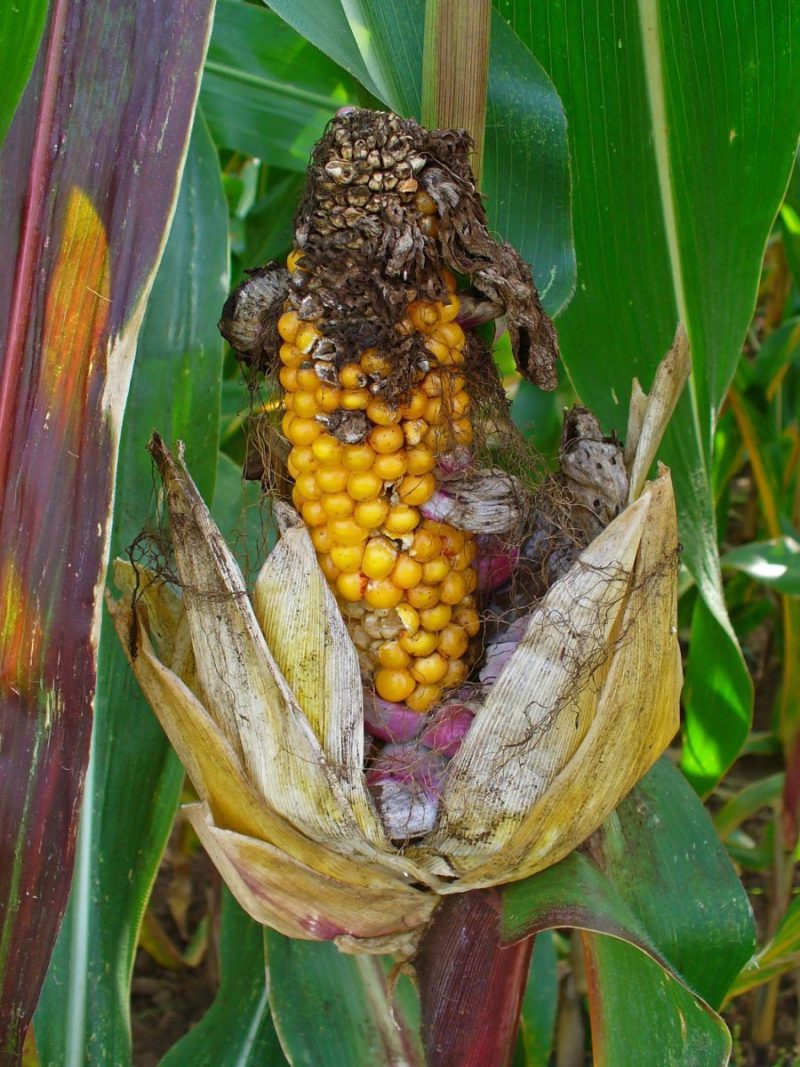
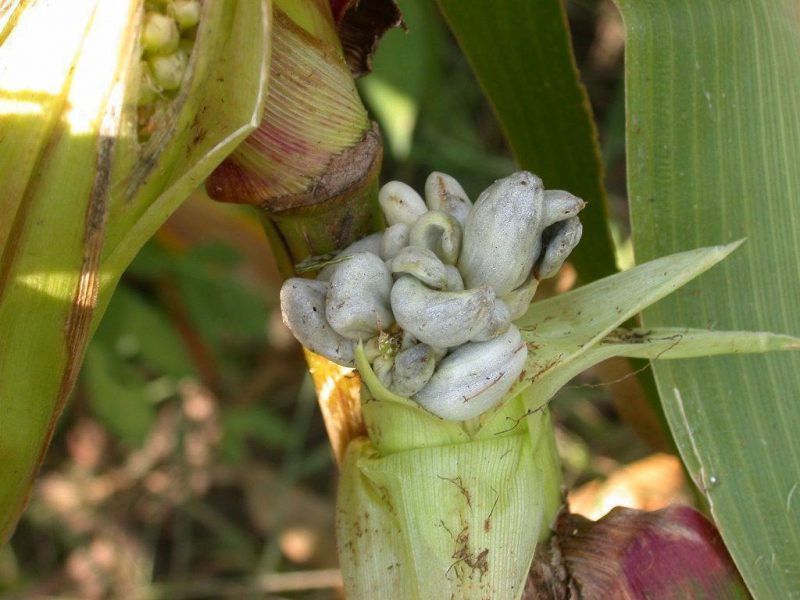
This disease can frequently be observed in maize crops causing damage, on average 2-5% of the annual crop.
Symptom. The disease occurs on all above-ground organs of the plant, sometimes also on adventitious roots. On the attacked organs, bags (tumours) form, which can reach up to the size of a fist, with a silvery-white or greyish membrane on the outside.
At first, the contents of the bags are viscous, then they turn into a moist, brownish-black mass. This is made up of teliospores that are released as a blackish powder.
It resists in the soil for 2-3 years as teliospores.
Prophylaxis. Crop rotation, cultivation of resistant hybrids, avoidance of mechanical injury during maintenance work, and gathering and destruction of tumours to avoid increasing the teliospore reserve in the soil are recommended. It is also recommended to treat maize grains intended for sowing with specific fungicides.















































































































































































































































































































































































































































